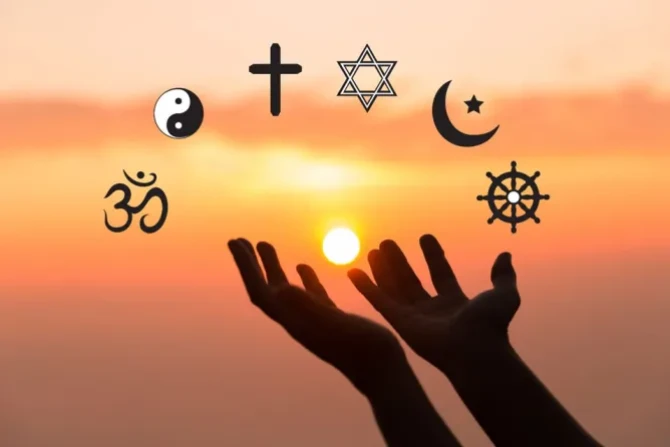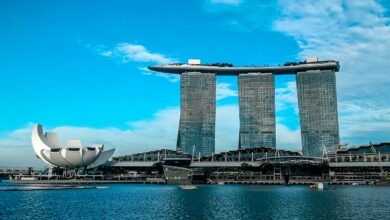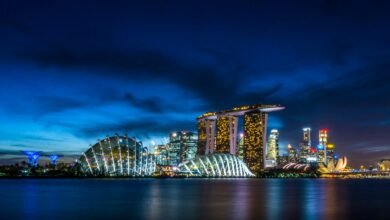
Singapore is a vibrant, multicultural city-state that prides itself on its rich tapestry of religions and languages. With a diverse population comprising various ethnic groups, Singapore’s social fabric is woven from the beliefs, practices, and languages of its residents. Understanding the religious landscape and linguistic diversity is essential for appreciating the unique culture of this Southeast Asian nation.
Religious Diversity
Singapore is home to a multitude of religions, reflecting its multicultural society. The major religions practiced in Singapore include:
- Buddhism: The largest religion in Singapore, Buddhism is practiced by around 33% of the population. Various schools of Buddhism coexist, including Theravada, Mahayana, and Tibetan Buddhism. The city is dotted with beautiful temples, such as the Buddha Tooth Relic Temple in Chinatown and the Kong Meng San Phor Kark See Monastery.
- Christianity: Approximately 18% of Singaporeans identify as Christians, representing a mix of denominations, including Roman Catholicism, Protestantism, and Eastern Orthodoxy. Churches like St. Andrew’s Cathedral and The Chapel of the Holy Spirit serve as places of worship and community.
- Islam: Around 15% of the population practices Islam, primarily among the Malay community. Singapore is home to numerous mosques, such as the iconic Sultan Mosque in Kampong Glam, which showcases beautiful architecture and serves as a cultural center for the Muslim community.
- Hinduism: About 5% of Singaporeans are Hindus, with the majority belonging to the Indian community. Hindu temples, like the Sri Mariamman Temple in Chinatown and the Sri Veeramakaliamman Temple in Little India, are vital cultural and religious hubs, celebrating festivals such as Deepavali with colorful displays and vibrant rituals.
- Taoism and Other Religions: Taoism is also practiced by many, often in conjunction with Chinese folk beliefs. Additionally, there are smaller communities practicing Sikhism, Judaism, and Buddhism. The presence of multiple religious practices fosters an atmosphere of tolerance and mutual respect among different faiths.
Languages Spoken
Singapore’s linguistic landscape is as diverse as its religious one. The country recognizes four official languages:
- English: As the primary language of administration and business, English serves as a common medium for communication among Singaporeans of different ethnic backgrounds. It is the language of instruction in schools and is widely spoken in workplaces and public life.
- Mandarin: Mandarin is the most spoken language among the Chinese community, making up about 36% of the population. It has gained prominence through government initiatives promoting its use, and many schools offer Mandarin as a first language option.
- Malay: Malay is the national language of Singapore and holds cultural significance for the Malay community, which makes up about 13% of the population. It is used in the national anthem and military commands. Malay is also commonly heard in everyday conversations and traditional ceremonies.
- Tamil: Tamil is the most widely spoken Indian language in Singapore, primarily among the Indian community, comprising about 9% of the population. It is taught in schools, and cultural festivals often showcase Tamil arts and traditions.
Multilingualism and Cultural Integration
Singapore’s commitment to multiculturalism and multilingualism is reflected in its educational policies, public signage, and media. Most Singaporeans are bilingual, speaking their mother tongue alongside English. This linguistic diversity fosters a sense of community and cultural integration, allowing for effective communication and understanding among different ethnic groups.
The government promotes the use of the Mother Tongue Language policy, encouraging citizens to learn their ethnic languages while maintaining English as a common language. This initiative helps preserve cultural heritage and ensures that younger generations remain connected to their roots.
Cultural Festivals and Celebrations
Singapore’s diverse religions and languages are celebrated through various cultural festivals that bring communities together. Some notable celebrations include:
- Chinese New Year: Celebrated by the Chinese community, this festival features vibrant parades, lion dances, and family gatherings.
- Hari Raya Puasa: Marking the end of Ramadan, this festival is celebrated by Muslims with prayers, feasting, and visiting friends and family.
- Diwali: Known as the Festival of Lights, Diwali is celebrated by the Hindu community with colorful decorations, fireworks, and the lighting of oil lamps.
- Thaipusam: This Hindu festival involves a procession to the Sri Thendayuthapani Temple, where devotees participate in rituals, showcasing their devotion.
- Vesak: Celebrated by Buddhists, Vesak marks the birth, enlightenment, and death of Buddha, featuring temple ceremonies and community events.
Conclusion
Singapore’s religious diversity and linguistic richness are fundamental aspects of its identity, making it a unique and harmonious society. The coexistence of various faiths and languages not only enhances the cultural landscape but also fosters mutual respect and understanding among its residents. As visitors explore the city-state, they can appreciate the beauty of its multicultural heritage and witness firsthand the vibrant traditions that thrive in this dynamic nation. Whether wandering through temples, participating in festivals, or engaging with locals, the multicultural essence of Singapore offers a captivating experience for all.



